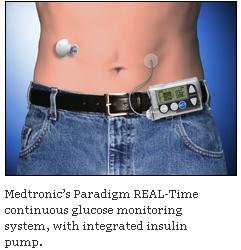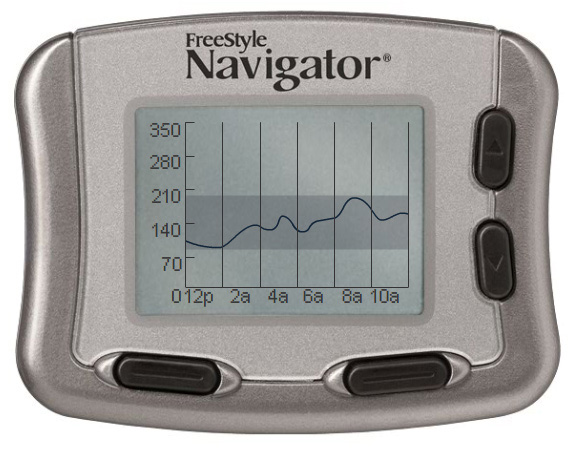CGM: Ready For A Second Look?
.JPG)
When it comes to technology, three years is an awfully long time. Computers sold three years ago barely have enough memory to run today’s software. Few cell phones had Internet access, and televisions could pick up local broadcasts without the aid of a cable.
In the field of diabetes, continuous glucose monitoring (CGM) has seen a similar evolution. The “Glucowatch” debacle notwithstanding, most real-time CGM systems were introduced just three years ago. For the most part, these first-generation systems had their share of quirks and glitches, including accuracy problems, complex programming, and annoying alarms. Combined with the lack of insurance coverage, it was enough to deter many people from giving this innovative technology a try.
But as the saying goes, time has a way of healing.
Each manufacturer of CGM equipment (Medtronic, DexCom, and Abbott) has installed a department dedicated to working with clients to help secure insurance coverage. And thanks to their persistence and the appearance of original research in peer-reviewed scientific journals, insurance coverage for CGM is spreading across the US. In the past year, there has been a 30-fold increase in CGM coverage, with more than 200 million Americans now having some form of coverage for CGM in their commercial health plans.
The engineers at each of the CGM companies have been hard at work making improvements to their respective systems. What we have today is far from perfect, but it is definitely more serviceable than what we had a few years ago. To me, the true test of technology is whether what you get out of it exceeds the work you put into it. Today’s systems provide more valuable information and are much less of a pain-in-the-you-know-what than they used to be. Let’s look at some of the details.
dexcom
.JPG)
Perhaps the most important changes in the DexCom system involve the transmitter and calibration algorithm. The improved transmitter function means far fewer data gaps and improved signal clarity. Unlike earlier versions of the DexCom, the system now gears its current readings and trend graphs immediately toward calibration entries. This enhances overall data accuracy and reliability. In fact, DexCom no longer requires calibrations to be performed in a “steady state.” Calibration readings can be entered whether the current blood sugar is rising, falling or steady… a definite convenience for users of the system.
Oh, before I forget, compared to the original DexCom, the Seven Plus asks for sensor changes (or system reset) every seven days instead of three, and the sensor/transmitter is now fully waterproof.
navigator
Since Navigator was the last device to enter the marketplace, there hasn’t been much time for “evolution.” However, two important changes/improvements have been made.
First, despite the fact that Navigator already offers excellent on-screen data analysis in both graphic and statistical form, downloading software was made available last year. A special “extension” program can be added to Abbott’s PC-based Copilot software, allowing it to incorporate data from the Navigator system via Bluetooth technology.
The second improvement involves the sensor itself. When Navigator sensors were first introduced, concern was raised about the possibility of silicon residue being left under the skin after the sensor was removed. Although this was an extremely rare occurrence, Abbott changed the sensor’s backing material from silicon to ordinary carbon in order to eliminate the risk entirely.
medtronic

Through a better understanding of the sensor’s functionality, Medtronic has implemented a number of changes to their training processes. These changes, including altering the angle of insertion and allowing for a “wetting” period after insertion, have resulted in improved sensor performance.
Medtronic has also placed significant emphasis on data analysis software. New iterations of their original web-based Carelink Personal software have already been launched, along with a CareLink USB device for easing and speeding the data upload procedure without going through a blood glucose meter. The latest version of Carelink supports more than thirty different blood glucose meters and this software wins very high ratings from doctors and educators, who can access it via the web.
Sure, the one constant in life is change. A few years from now, we’ll probably look back at today’s CGM systems and think, “How primitive was that?” But at some point, the good stuff clearly outweighs the bad stuff, and it makes sense to make the move. My practice continues to offer CGM “trials” for those looking to try out the latest systems and receive some insight regarding the results. This is available in-office or remotely via mail and phone. For more information, call (877) 735-3648, visit www.integrateddiabetes.com, or write to me at gary@integrateddiabetes.com.
Our web site also contains a detailed comparison of the various CGM systems for those who are considering which one to use: http://www.integrateddiabetes.com/CGMCompSep08.doc.








